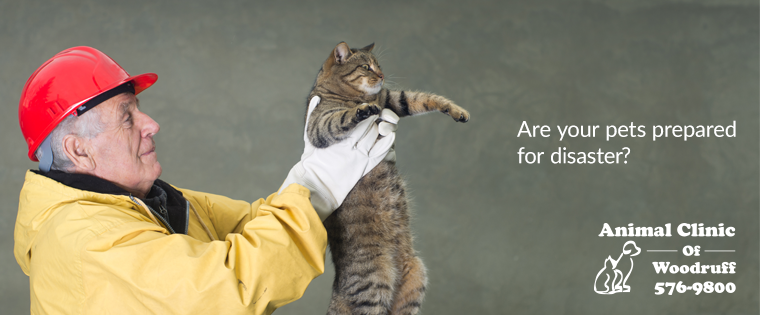In August, we saw record floods in Louisiana and destructive fires in California, and appropriately, September is National Disaster Preparedness Month. It’s an ideal time, then, to think through your family’s disaster preparations – not just for your house and children, but also for your pets. Do you know what to do with your pets if a tornado, flood, hurricane, fire or other disaster strikes?
If you ever have to evacuate your home, the best plan is to take your pets with you. To ensure that they are welcome where you go and as safe as possible, follow these important steps.
- Make a plan. Create a plan to evacuate safely, and then ensure every family member understands it. The best plans are simple. Determine ahead of time where you will go, which means researching pet-friendly hotels or friends’ homes where you can stay. Have a list of key people (family members, veterinarian) and their contact information. Develop a “buddy system” of friends or neighbors and swap keys and contact information with them so that you can help each other as needed.
- Ensure pets are identified. Your pets may run off during a disaster, or may temporarily be separated from you for other reasons. Make sure all pets have collars with ID tags. You can even add a luggage tag to their collars before traveling. Also ensure all your pets have microchips, which is the most reliable way to ensure your pet will be reunited with you.
- Own a carrier/crate. Carriers simplify traveling and may allow you access in places pets sometimes aren’t allowed. Also, if you need to stay in a shelter, your pet will likely need to live in a crate. Ensure a cat’s crate has enough room for the cat, her bowls, and a litter box, and dog crates should have room for the dog to stand and lie down alongside food bowls.
- Create a pet emergency supply kit. Fill a portable box or tub with a three-day supply of dry food, water, medications (with dosage instructions) and kitty litter. Add contact information (for you, your vet and your emergency location), medical information about your pets, and a photo of you and your pet together. Add leases/harnesses and some basic cleaning supplies (plastic bags, wipes, paper towels).
If you are not able to evacuate with your pets, then take precautions to ensure they are as safe as possible.
- Bring dogs and cats indoors (blocked off from each other if they’re not accustomed to being together). Never leave a dog tied up or fenced in outside.
- Leave out dry food that won’t spoil and plenty of bowls and tubs full of water – enough nutrition to last three days.
- Put exotic or difficult-to-manage pets in cages.
- Leave a note on your door indicating that pets are inside.
- Contact friends or neighbors (your “buddy system” from your evacuation plan) to help care of your pets as they are able, especially if you are not home when disaster strikes.
In general, remember that disasters are stressful for your pets too. They may be more likely to bite, spook, or run off. That’s why the best preparations come before hand – remain up-to-date on vaccinations, keep ID on your pets at all times, and then stay as calm as possible. Remember, your pets are dependent on you to keep them safe.
For more information, the American Veterinary Medical Association has produced a great short video on how to prepare (view the video here) as well as a helpful brochure, “Saving the Whole Family” (download it here).













